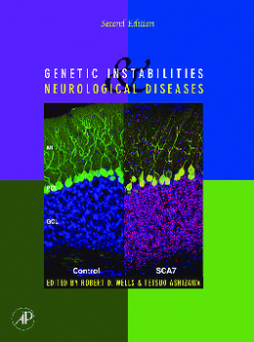
Additional Information
Book Details
Abstract
Genetic Instabilities and Neurological Diseases covers DNA repeat instability and neurological disorders, covering molecular mechanisms of repeat expansion, pathogenic mechanisms, clinical phenotype, parental gender effects, genotype-phenotype correlation, and diagnostic applications of the molecular data. This updated edition provides updates of these repeat expansion mutations, including the addition of many new chapters, and old chapters rewritten as extensions of the previous edition. This book is an invaluable reference source for neuroscientists, geneticists, neurologists, molecular biologists, genetic counsellors and students.
- Contributions by most of the principal research teams in the area, edited by world-renowned leaders
- Lays the background for future investigations on related diseases
Praise for the First Edition:
"... this presentation provides continued incentive to contribute to understanding the molecular foundation of each unique disease with the hope of insight and new strategies for treatment. ... I highly recommend this book to anyone with an interest in DNA or human disease."
- Alan P. Wolfe, Chief, Laboratory of Molecular Embryology, National Institutes of Health
"... this is not a journey, it is an odyssey! ... the Wells and Warren book is outstanding. Here, the publishers deserve a pat on the back for the layout, figures (some of which are in colour) and print quality. I simply cannot praise this book enough. My copy will be jealously guarded!"
- Jamal Nasir, Department of Molecular Medicine, Western General Hospital, Edinburgh UK
"Genetic Instabilities is an extremely useful reference book that geneticists, researchers, and clinicians will want on their shelves. ... There is no doubt that Genetic Instabilities will be a much-sought-after reference text in may laboratories - it certainly already is in ours."
- Puneet Opal and Henry Paulson, Dept. of Neurology, University of Iowa
